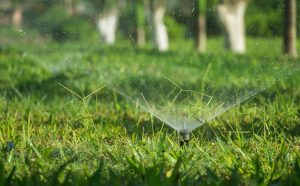How to Choose the Right Pavers for Montana’s Freeze-Thaw Cycles
Montana’s rugged beauty comes with seasonal challenges, especially when it comes to outdoor surfaces. Between icy winters, spring thaws, and fluctuating temperatures, materials in your landscape need to hold up against serious freeze-thaw stress. If you’re considering adding a patio, walkway, or driveway to your yard, choosing the right pavers is essential for long-term durability and appearance.
At Horizon Landscape & Irrigation, we help homeowners in Billings, Laurel, and across the region select and install pavers that not only look great—but survive Montana’s harsh climate year after year.
Why Freeze-Thaw Cycles Matter
When water gets into the pores of pavers and then freezes, it expands. This expansion can crack or shift the material, leading to uneven surfaces, crumbling edges, or worse. In Montana, where winter temperatures regularly drop below freezing and then bounce back during the day, this cycle repeats dozens of times—making the wrong paver choice a costly mistake.
Top Qualities to Look For in Cold-Weather Pavers
To withstand Montana winters, pavers must meet a few important standards:
Low Water Absorption: The less moisture a paver absorbs, the less chance it will freeze and expand internally. Look for materials with less than 5% absorption rate.
Durability and Strength: Pavers should have a high compressive strength (over 8,000 psi is ideal) to resist cracking and flaking.
Slip Resistance: With snow and ice in play, textured surfaces help prevent slips and falls.
Edge Integrity: Pavers with chamfered edges or designed edge-locking systems reduce shifting and cracking from pressure.
Best Paver Materials for Montana’s Climate
Here are a few cold-hardy options we recommend for Montana landscapes:
Concrete Pavers (High-Density): Affordable, versatile, and now available in many styles. Make sure they’re labeled “freeze-thaw resistant” or rated for cold climates.
Clay Brick Pavers: Traditional and very dense, clay bricks are a timeless choice and handle temperature shifts well—though they may be more costly.
Natural Stone (with caution): Not all stone is created equal. Granite and dense sandstone perform well, but porous stones like limestone or flagstone may crack unless sealed properly.
Avoid These Common Mistakes
Poor Base Preparation: The most durable pavers in the world won’t last if they’re set on soft, shifting ground. A well-compacted gravel base with proper drainage is critical.
No Edge Restraints: Without solid edging, pavers can move as the ground shifts in winter.
Skipping Sealant (When Needed): While not all pavers need sealing, many natural stones and some concrete pavers benefit from sealants that add an extra moisture barrier.
Let the Pros Handle It
Proper installation is just as important as the material you choose. At Horizon Landscape & Irrigation, we take local soil conditions, slope, drainage, and weather patterns into account with every hardscape design. We only recommend and install pavers that have been proven to perform in Montana’s demanding conditions.
Whether you’re creating a cozy patio for summer grilling or a beautiful walkway that stays safe in winter, we’ll help you choose the right materials and install them with precision.
Ready to Build a Surface That Lasts?
Explore freeze-resistant paver options with help from our team. Visit https://horizonlandscapemt.com to request a consultation or browse our latest hardscaping projects built for Montana weather.
Read Next: Low-Maintenance Landscaping Ideas for Busy Montana Homeowners




